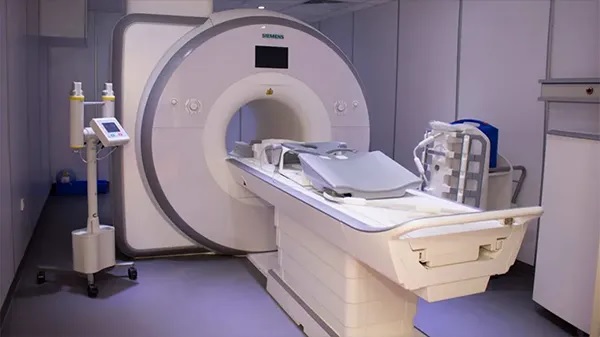Magnetic Resonance Imaging (MRI) is a widely used diagnostic tool that helps doctors examine the internal structures of the body. It is particularly useful for diagnosing conditions affecting the brain, spine, muscles, joints, and organs. However, one common concern for individuals who may need an MRI is the cost associated with the procedure. MRI scans can be expensive, and the cost varies significantly depending on several factors. This article provides a comprehensive overview of MRI scan costs, including factors that influence pricing, ways to reduce costs, and what to expect when undergoing an MRI.
What is an MRI?
Before diving into the costs, it’s important to understand what an MRI scan is and how it works. An MRI uses a powerful magnetic field, radio waves, and a computer to create detailed images of the organs and tissues inside the body. Unlike X-rays or CT scans, MRI does not involve ionising radiation, making it a safer option for many patients.
MRI scans are used to diagnose a wide range of conditions, including brain and spinal cord disorders, joint injuries, soft tissue problems, and even some cancers. The detailed images provided by MRI help doctors make more accurate diagnoses and create appropriate treatment plans.
How Much Does an MRI Scan Cost?
The cost of an MRI scan can vary widely depending on several factors, including location, the facility performing the procedure, and the type of MRI being conducted. On average, an MRI scan in the United States costs between $400 and $3,500. However, the price can be higher for specialised scans or when additional imaging is required.
1. Location and Facility
The cost of an MRI scan can be influenced by the location of the imaging center. For instance, MRI scans in major cities or metropolitan areas are often more expensive than those in rural or suburban locations. This is due to factors such as higher overhead costs, more advanced equipment, and the overall cost of living in larger cities.
In addition, the type of facility performing the MRI can impact the cost. Hospitals tend to charge more for MRI scans compared to outpatient imaging centers, though the pricing difference can vary depending on the specific hospital or facility. Private imaging centers or standalone clinics may offer more affordable options, while hospital-based scans might include additional facility fees or costs related to the doctor’s involvement.
2. Type of MRI
The cost of an MRI can also depend on the type of scan being conducted. Some common types of MRI scans include:
- Brain MRI: Typically used to detect conditions affecting the brain, such as tumors, strokes, or neurological disorders.
- Spinal MRI: Used to evaluate the spine and surrounding structures for issues like herniated discs, arthritis, or spinal cord abnormalities.
- Joint MRI: Often used to examine the muscles, tendons, and ligaments in the joints, including the knees, shoulders, or hips.
- Abdominal or Pelvic MRI: These scans help to identify conditions related to organs in the abdomen or pelvis, such as the liver, kidneys, or reproductive organs.
Specialized MRI scans, such as those using contrast agents (dye injected into the bloodstream to highlight certain areas), may also increase the cost. In contrast, MRIs can be more expensive due to the need for specialized equipment and additional substances used during the procedure.
3. Insurance and Payment Options
For many patients, insurance coverage is a critical factor in determining the out-of-pocket cost of an MRI scan. If a person has health insurance, the cost of the MRI scan will typically be covered in part, though there may still be deductibles, co-pays, or co-insurance to consider. The total amount an insured patient pays can depend on several factors, including the specifics of their plan and whether the imaging center is in-network or out-of-network.
For patients without insurance or those who prefer to pay out-of-pocket, the cost of the MRI scan can be higher. However, many imaging centers offer payment plans or discounts for self-pay patients, so it’s worth inquiring about these options before scheduling the procedure.
4. Other Factors Affecting Cost
Additional factors can also influence the overall cost of an MRI scan. For example, the need for sedation or anesthesia can increase the price, particularly for patients who may be claustrophobic or unable to stay still during the procedure. The presence of additional medical conditions that require a more complex scan could also increase the cost.
In some cases, patients may require more than one scan to examine different areas of the body, which would naturally result in higher costs. For example, a patient undergoing a full-body MRI or multiple scans on different body parts could face higher total costs than someone requiring a single, localized scan.
How to Reduce the Cost of an MRI
While the cost of an MRI can be high, there are several ways to reduce the financial burden. Below are some strategies to consider when trying to lower the cost of an MRI scan:
1. Shop Around
MRI prices can vary significantly between imaging centers, even within the same geographic area. It’s a good idea to call around and compare prices before scheduling your scan. Be sure to ask about any additional fees, such as the cost of contrast dye or facility charges, as these can affect the total price.
2. Check with Your Insurance Provider
If you have health insurance, it’s essential to check with your insurance provider before scheduling the MRI. Find out if the imaging center is in-network, as out-of-network providers may charge more. Additionally, ask about any copayments or deductibles you may need to pay and what will be covered by your insurance policy.
3. Consider Outpatient Imaging Centers
Outpatient imaging centers and standalone MRI clinics tend to offer more affordable prices compared to hospitals. These centers are often able to offer lower costs due to lower overhead, so it’s worth exploring these options if you are looking for a less expensive MRI.
4. Ask About Financial Assistance
Some hospitals and imaging centers have financial assistance programs for patients who are unable to afford the full cost of the procedure. If you are uninsured or underinsured, it’s worth asking if you qualify for any assistance programs or discounts.
5. Use Health Savings Accounts (HSAs) or Flexible Spending Accounts (FSAs)
If you have a Health Savings Account (HSA) or a Flexible Spending Account (FSA), you can use these funds to pay for your MRI scan. These accounts allow you to set aside money tax-free for healthcare expenses, including medical imaging.
Conclusion
MRI scans are a valuable diagnostic tool that can help doctors identify a wide range of medical conditions. While the cost of an MRI scan can vary significantly based on factors like location, the type of scan, and insurance coverage, there are several ways to manage or reduce the costs associated with the procedure. By shopping around for the best price, checking your insurance coverage, and exploring financial assistance options, patients can reduce their out-of-pocket expenses while ensuring they receive the necessary care.
Ultimately, understanding the factors that influence MRI costs and taking the time to research your options can help you make an informed decision about your healthcare. If an MRI is recommended by your doctor, discussing cost concerns upfront will help ensure that you are fully prepared for the financial aspects of the procedure.



